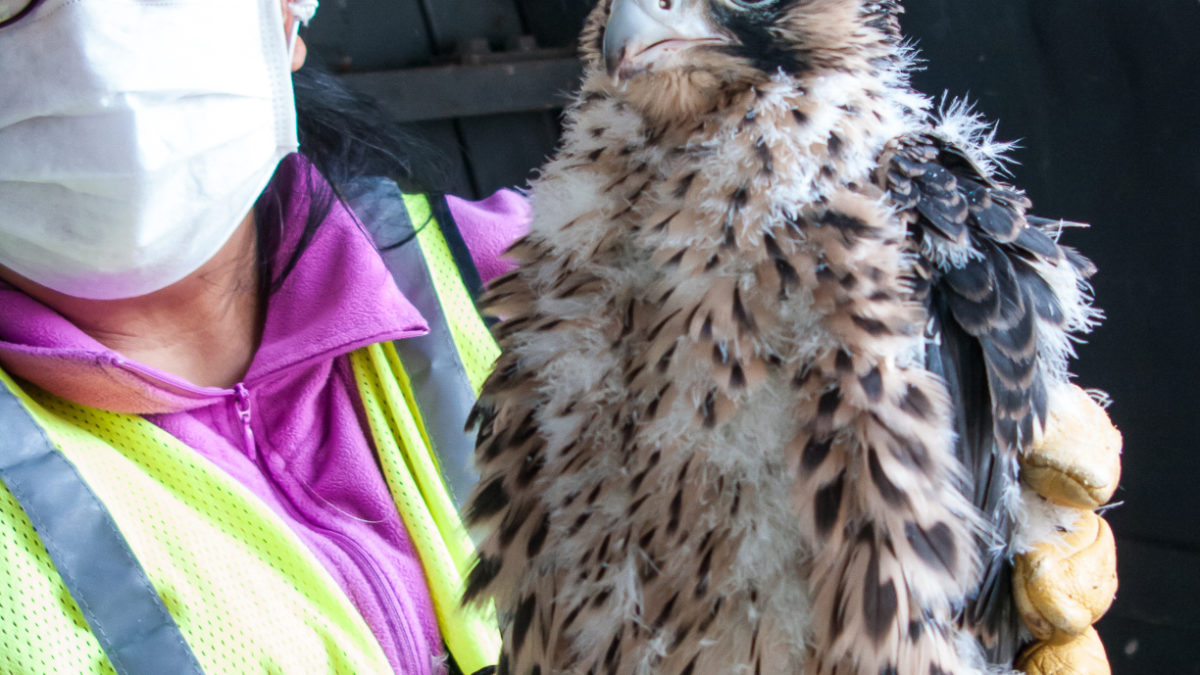2020: Another good production year for Virginia peregrines

CCB makes technical reports more accessible
September 30, 2020
From recipient population to donor population in only 16 years
October 6, 2020By Bryan Watts
10/05/2020
Despite the difficulties of working the breeding sites during the global pandemic, CCB was able to complete the 2020 spring field season and peregrines in Virginia had an exceptional year. The population tied the all-time high of 32 occupied territories and produced 58 young. This production is second only to the 61 young produced in 2019. The reproductive rate was 1.81 young per occupied territory. Of the 26 pairs where breeding attempts and outcomes were documented, 76.9% were successful. Of the 69 eggs followed through to banding, 66.7% hatched and 63.7% survived to banding age. Average brood size for successful pairs was 2.9 young.
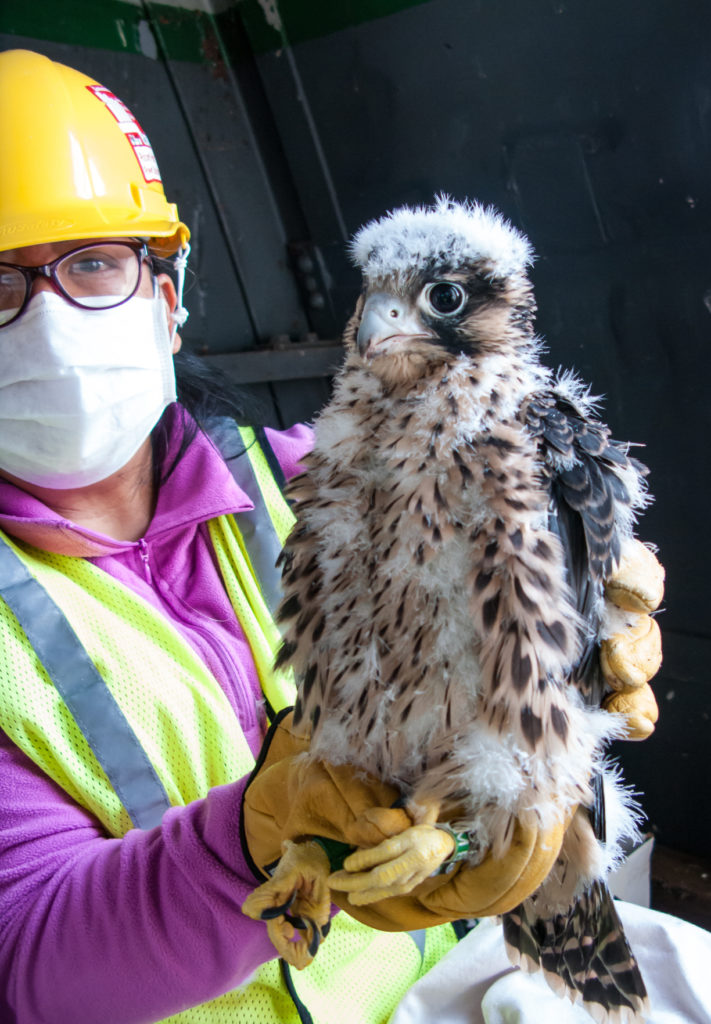
We recorded an amazing three second-year females that were recruited into the breeding population during the 2020 season. Most females do not recruit into the population until age three or four. Over the past forty years we have documented less than ten second-year females that have held territories during the breeding season. None of the three in 2020 produced young which has been the norm. We have documented only two productive second-year females, including a female on the Berkley Bridge in 2004 that produced two young and the female on the James River Bridge in 2019 that produced two young.
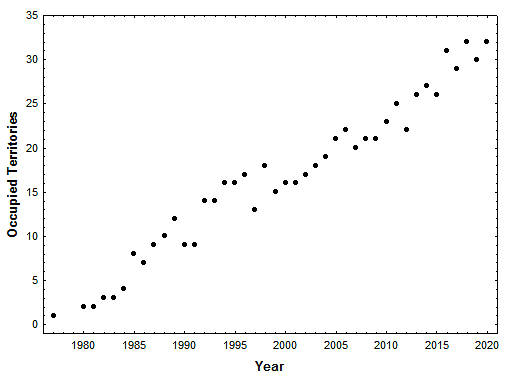
In one of the more interesting recoveries in recent years, Nathan Crockford captured one of our hatch-year females on 29 July while conducting bird control activities around the airfield on Montreal International Airport. This bird (80/BH) was hatched on the Reston Town Center building and banded on 21 May. The bird was observed in Reston on 14 July. The one-way distance between Reston and the airport is 785 kilometers. After capture the bird was transported 40 kilometers from the airport to Rigaud, Quebec and released.
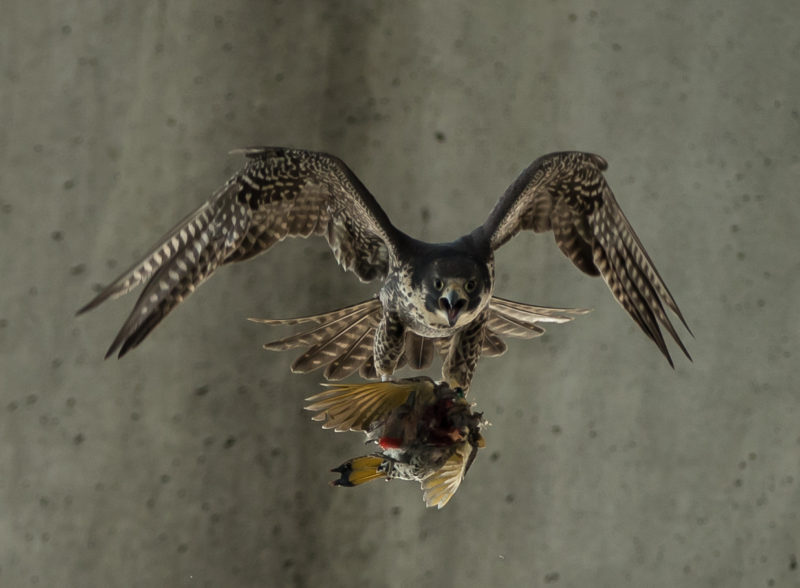
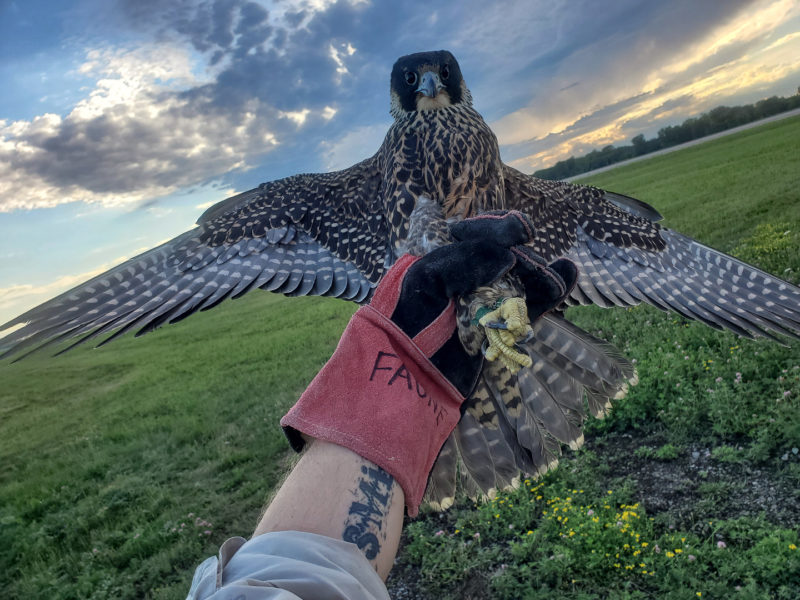
For the 21st consecutive year birds were translocated from the coast to the mountains. Three young falcons were moved from the James River Bridge to Shenandoah National Park and placed in a hack box on 29 May. Birds were released on 13 June and all were fine until they dispersed from the site. One of the birds was photographed in Forsythe National Wildlife Refuge in New Jersey on 19 August by Rich Owner.
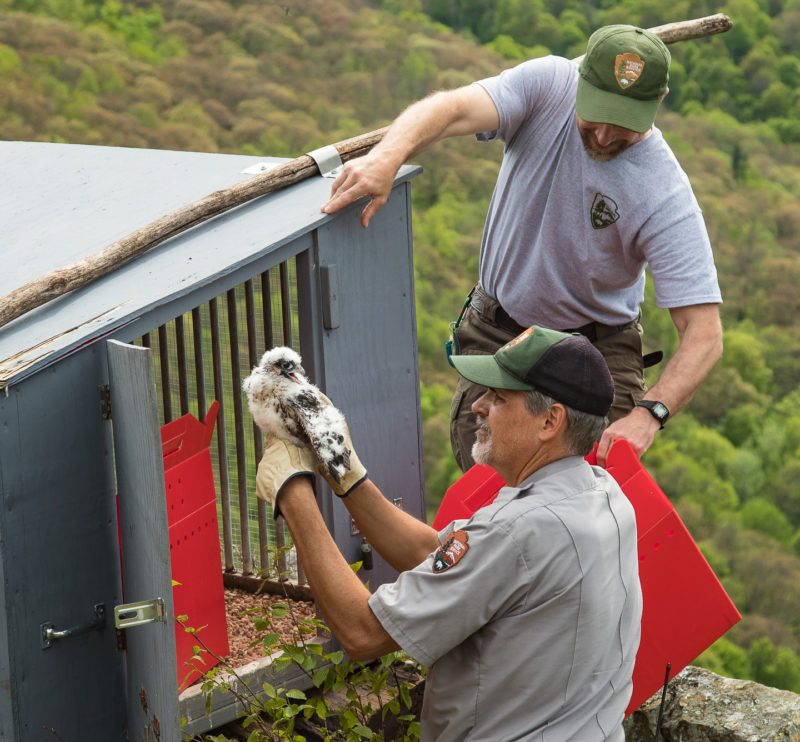
Managing this widely distributed population would not be possible without an entire community of dedicated peregrine people. Funding and support was provided by the Virginia Department of Wildlife Resources and The Center for Conservation Biology at William & Mary. We thank the many watchers, managers and administrators who make significant contributions to the continued recovery of the population.

